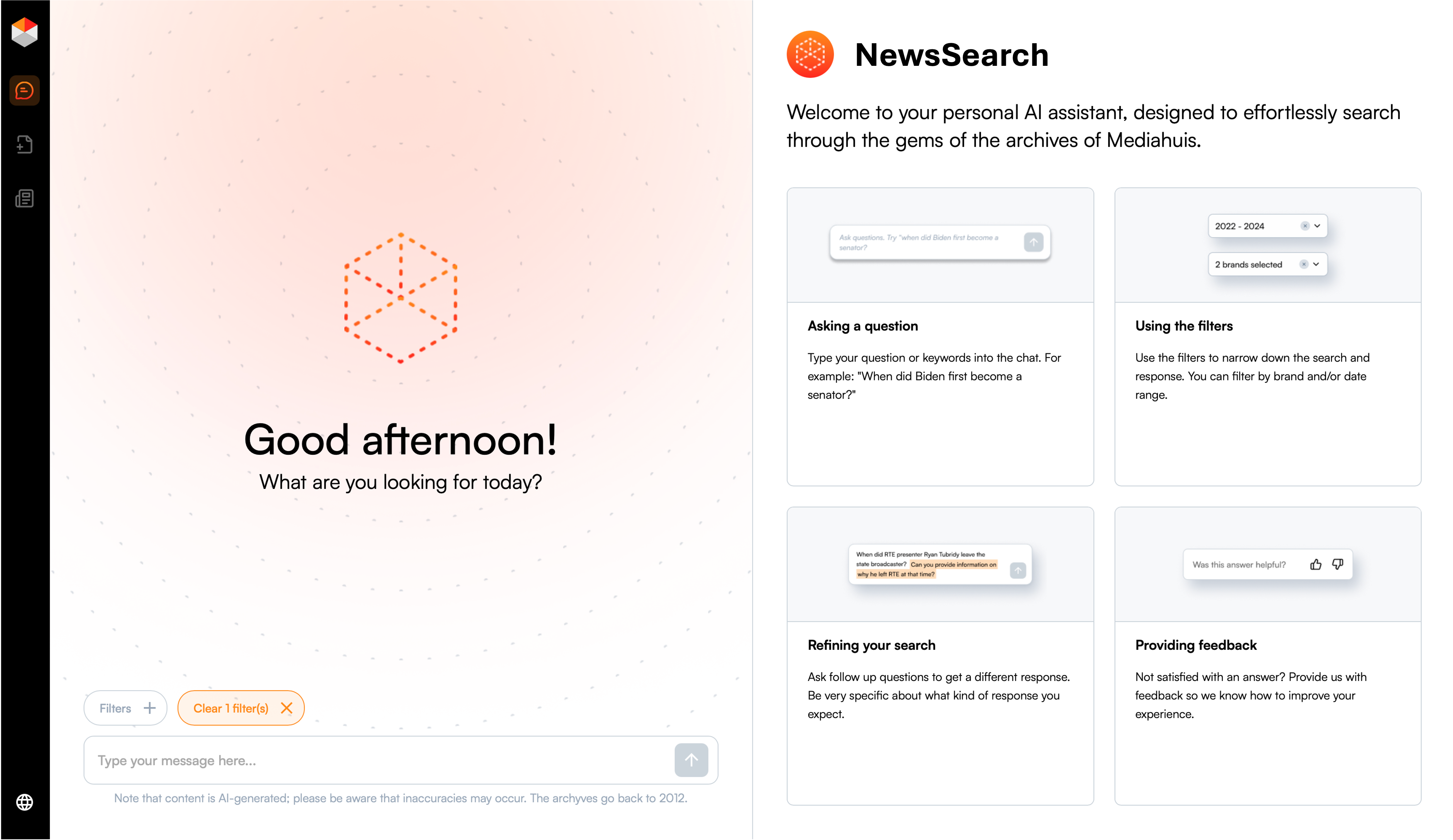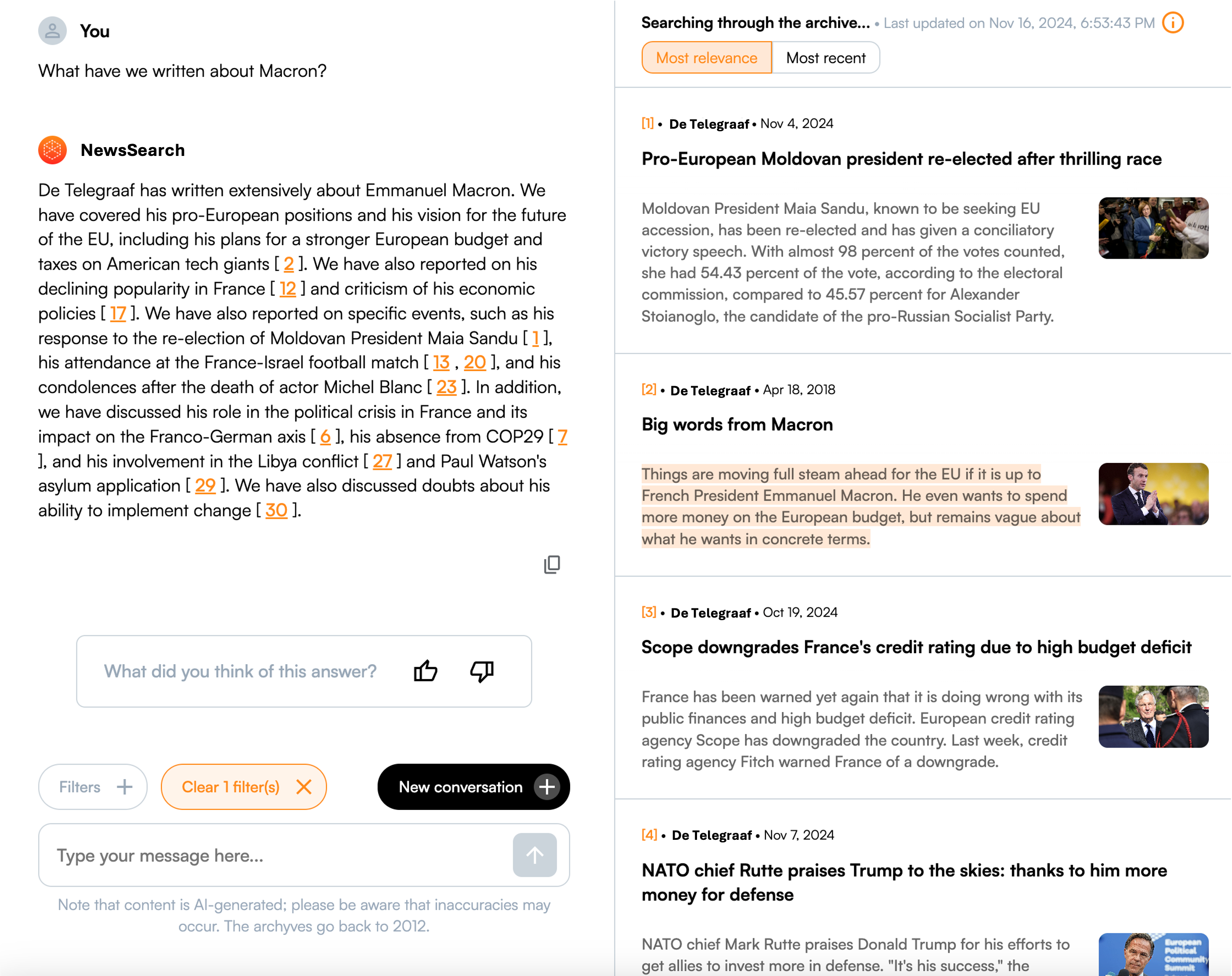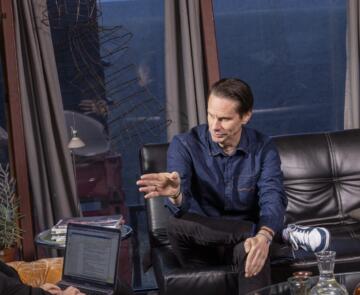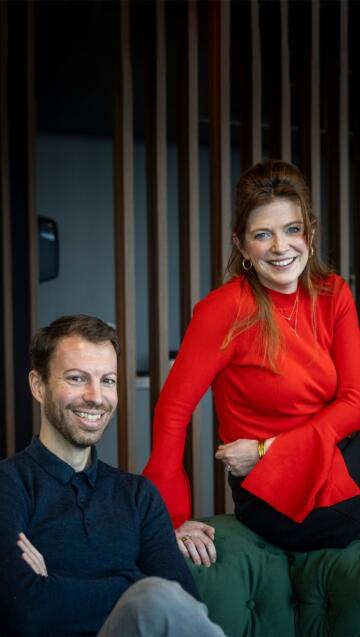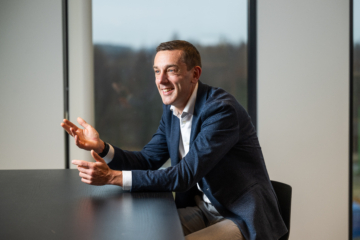
Navigating AI disruption as a group
External and internal surplus
Technology and product development are essential for the success of Mediahuis. Both are equally important to what we do in journalism and commerce. By bringing technology together within our group and scaling it up, we can better prepare for the future. That’s why our Technology & Product Studio (TPS) already has more than 400 colleagues.
AI has entered a disruptive phase. You could see it coming from afar, so at TPS we’ve been working on it for several years. First, because the technology is crucial for our products – our news sites and apps – and our consumers’ user experience. Second, because AI offers opportunities to improve our internal efficiency and automate certain processes.
“Our news brands each assemble their own technology package from the large Lego box”
AI-driven bias detector
We have already integrated AI technology in our newsrooms, to reduce the workload and provide inspiration to our journalists. For example, colleagues at De Telegraaf and De Standaard tested NewsSearch in 2024: a kind of internal ChatGPT, to quickly find what our titles have written about a particular topic in the past.
When it comes to generative AI, we are still in the testing and experimental phase. Before we can roll out this technology broadly, we need to iron out the kinks. We already use tools that suggest headlines and summarise articles. With the latter function, our journalists can, for example, shorten an existing long piece into an introduction for a new article, or we can give users the option to read only the summary of an article in the future.
But what our newsrooms do with AI goes much further than that. We measure the degree of bias in our output. For example, how much do we write about men and how much about women? And is that balance right or skewed? This data provides interesting insights that allow us to confidently pursue our mission: delivering balanced, independent journalism.

Personalised content
We are also targeting consumers with AI initiatives. We are making great strides, especially in personalisation and subscription acquisition and retention. And when we have tools that have proven themselves in the newsrooms, we want to eventually offer them to our users.
For example, we could give users the choice of how they want to consume an article. It could be the usual full article, a video variant or an audio version using text-to-speech. Or a summary via the tool we already use in our newsrooms. We will be able to generate all these versions in the background using AI.
“Standing still is not an option. Everyone must hitch their wagon while the train speeds ahead”
High-speed train
Both our journalists and users benefit from our central technological platform. The group structure of Mediahuis is a huge asset in this development, as it means our more than 30 news brands don’t all have to reinvent the wheel. We develop our applications centrally, in close collaboration with the various entities and titles, and then make them available to everyone within the group. This way, all our titles can progress.
To achieve economies of scale, you need a common foundation. However, flexibility remains paramount. Our news brands can each assemble their own technology package from the large Lego box. Each title builds its own house and always retains its identity.
By 2026, all brands must be connected to our central technology platform. Not all Mediahuis technology will be on that one platform by then, but a significant part linked to our products and newsrooms will be. Most Dutch and Belgian news brands are already connected, as are the German and Luxembourgish ones. Ireland is up next in 2025. Standing still is not an option. The idea is that everyone hitches their wagon while the train speeds ahead.

Waiting for clear rules
Big Tech companies like Google, Microsoft and Meta, as well as AI specialists like OpenAI and Anthropic, have an ambiguous role in this story. They are both partners and competitors. We are therefore seeking the right balance between cooperation and protecting our interests. Protecting the value and integrity of our journalism remains the primary concern in our dealings with Big Tech players.
For example, we have decided to block large language model crawlers from our news sites as much as possible. These crawlers dig up our articles and use them to train their models. Our strength as an international group allows us to engage in dialogue with these parties. However, the ultimate solution probably lies in strong European regulation.
Fact vs fiction
The rapid evolution of AI offers enormous opportunities, but everyone now realises that there are also significant dangers. Distinguishing fact from fiction is becoming increasingly difficult, and that includes in our newsrooms. But there are tools to help our journalists with that. Under no circumstances should artificial intelligence undermine our credibility. Trust in our journalism is crucial for our brands.
Will our news brands remain the destination of choice for consumers?
It is important that we are prepared for different scenarios. We can accelerate or slow down developments. For example, if people start using AI assistants to gather news, we will adjust our products accordingly. Even in that scenario, our journalism must continue to play a societal role.
